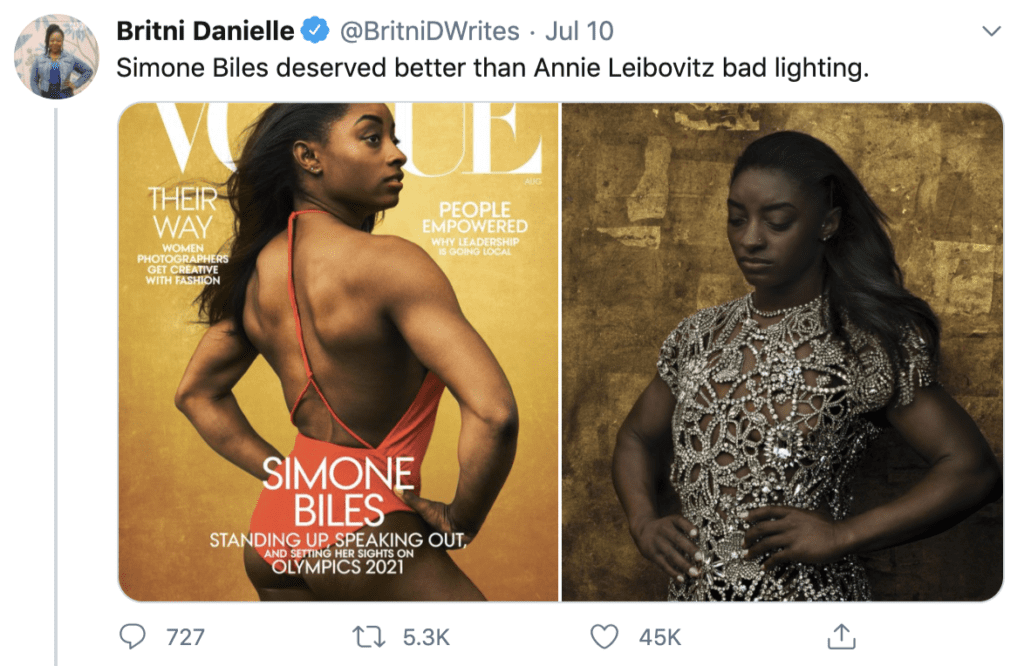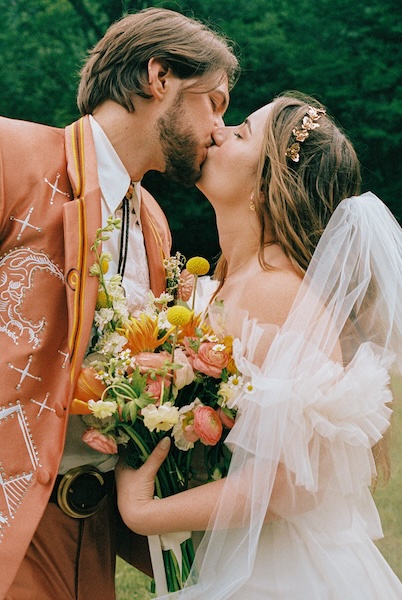Industry News
Just one day after we posted a story about British Vogue‘s July 2020 covers honoring frontline workers (photographed by Jamie Hawkesworth), a different Vogue cover is now in the news, and not in a good way. The August 2020 cover (and profile) of gymnast Simone Biles, published last week that was photographed by legendary image-maker Annie Leibovitz, is stirring up controversy, both because of Vogue‘s decision to hire a white photographer for this opportunity rather than a photographer of color, and because, critics say, the poor quality of light in the images do a disservice to Biles.
The consensus among the images’ detractors is that the lighting washes out Biles’ skin tone and that if Vogue had hired a Black photographer, they would most likely have had a better understanding of how to light for darker skin tones.
The first time Vogue hired a Black photographer to shoot one of their covers was back in 2018 when Beyoncé was featured, and it was the singer who hired 23-year-old Tyler Mitchell to photograph her. Astonishingly, Mitchell was the first African-American photographer in Vogue‘s 125-year history to shoot a cover photo.
Dissenters over the decision to use Leibovitz instead of a Black photographer also pointed to the “Vogue Challenge” this past Spring, where people took to social media to make Vogue-inspired covers with their own photos. As Black Women Photographers founder Polly Irungu tweeted, “After all the Black talent jumping out with #VogueChallenge, Vogue couldn’t idk hire a Black photographer to shoot this cover of Simone Biles?” Others, like writer and editor Britni Danielle, wrote:

Among the many critics of the images—who at the same time lauded the magazine’s article on Biles—was New York Times National picture editor Morrigan McCarthy, who made one of the boldest statements when she tweeted, “I adore Simone Biles and am thrilled she’s on this cover… but I hate these photos. I hate the toning, I hate how predictable they are, I hate the social crop here (wtf?) and I super hate that Vogue couldn’t be bothered to hire a Black photographer.”
With the crush of critics, though, came Annie supporters as well, some of whom were photographers themselves and who pointed out on Twitter that the article attached to these photos was a subdued profile covering the impact that the Larry Nassar trial had on Biles, her family, and her career—in which case, they said, muted images of its subject were perhaps more appropriate.
No matter what side you take on this, the upside of it all is that it can only help in advancing the open dialogue on hiring practices that the industry now seems willing to engage in more publicly—and that has been a long time coming.





